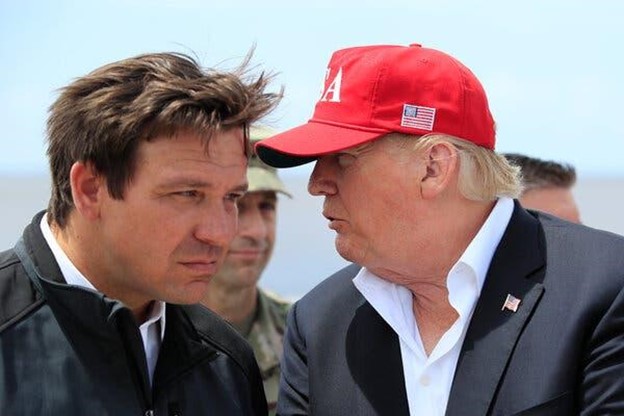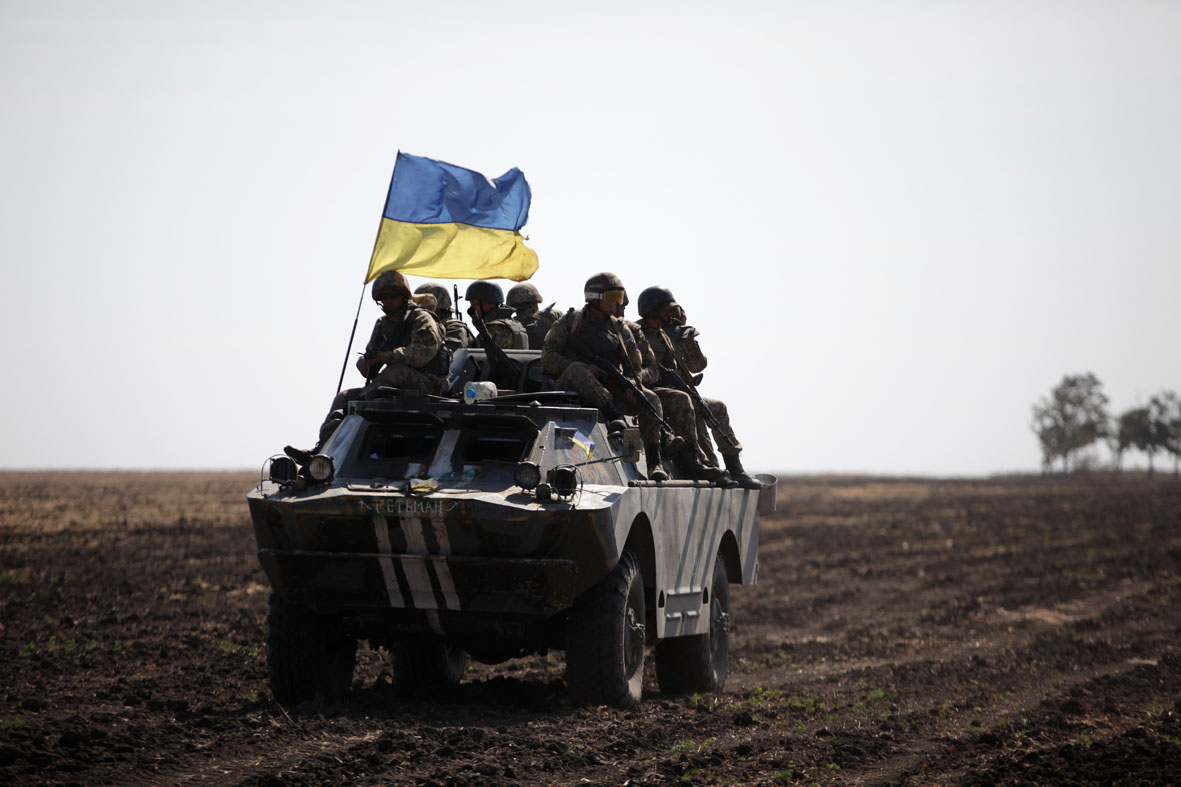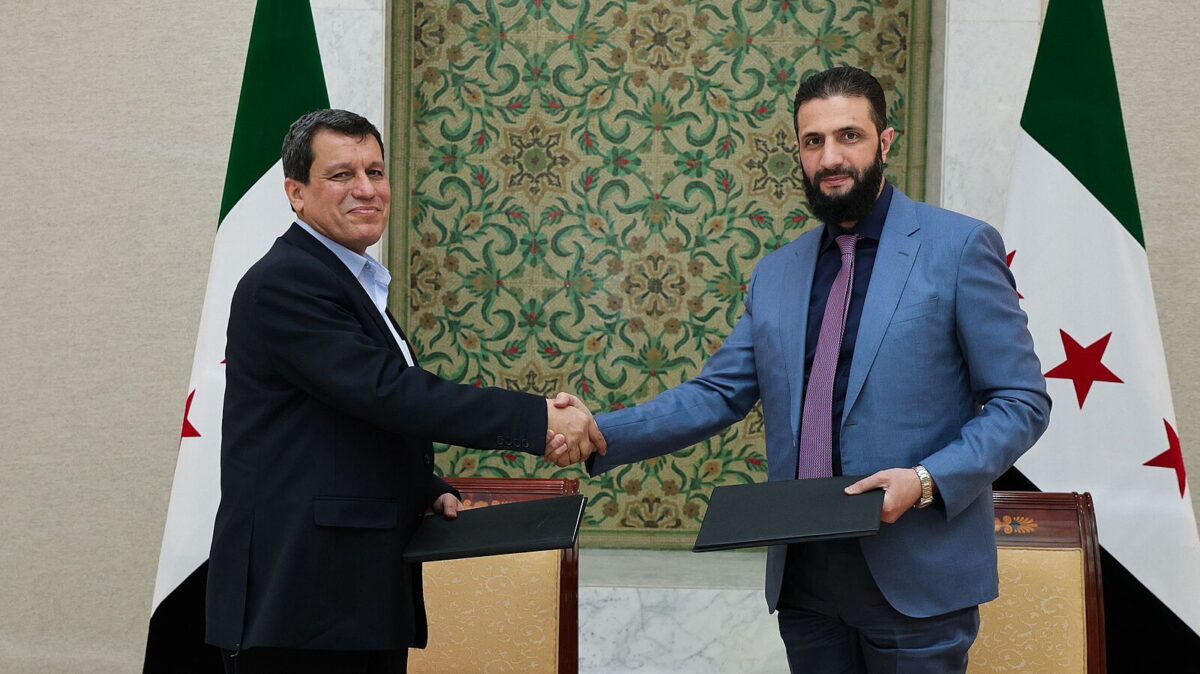The decisive battle for Ukraine is likely to begin next February in Iowa when voters take to the polls for the first primary of the 2024 presidential campaign. Former President Donald Trump and Florida Governor Ron DeSantis currently lead early polling to secure the Republican nomination—both view continued support for Ukraine as not being in America’s vital national interest. This is problematic for three major reasons. First, the Russo-Ukrainian War appears to be closer to its beginning than its end as there currently is little incentive for negotiation. Second, there is uncertainty as to whether Washington will provide aid to Kyiv for the long-term; and if the timing and scale of aid provided will affect battlefield conditions. This uncertainty favors Russia—Russia’s larger population and economic base allows Moscow to absorb losses of manpower and materiel that Kyiv simply cannot. Third, after being skewered for its chaotic withdrawal from Afghanistan, the Biden administration’s support for Ukraine is a striking foreign policy success that has not only checked Russian aggression, but revitalized the European security architecture. Russian combat losses have resulted in Moscow drawing on outdated equipment and turning to like-minded nations to augment its equipment losses and source its ammunition requirements. Coupled with a sanctions regime that has yet to take a deep bite out of the Russian economy, it is clear that Moscow will struggle to regenerate lost combat capability for the foreseeable future.
Russian forces have underperformed in Ukraine, clearly demonstrating a conventional force of quantity, not quality. Ukrainian forces have proven their valor and competence, holding off the world’s second largest army from taking Kyiv in the opening salvo of the war—and stabilizing their lines as the fighting shifted to the east and south where Russian-backed separatists have been entrenched since the 2014 invasion of “little green men.” Western nations would not have coalesced around Ukraine’s struggle without Washington’s strong leadership.
Security Assistance: What is it Good For?
Former President Trump has long questioned the utility of U.S. security agreements. The former president recently told a popular conservative television and radio host that he would negotiate a peace deal resulting in Russia taking over portions of Ukraine. Former NATO Secretary General Anders Fogh Rasmussen, an advisor to the Ukrainian government, views a potential Trump return to lead the Republican Party as potentially eroding bipartisan support for further Ukrainian security assistance. Governor DeSantis recently joined the fray, labeling the conflict as a “territorial dispute” between the two states and not in America’s vital interests. DeSantis then proceeded to tick off several challenges he viewed as more important, including countering China’s growing economic and military power.
This is a false dilemma—Washington can do both. Supporting Ukraine helps counter China by demonstrating American commitment to its partners and the norms of the international system while simultaneously revitalizing a dormant defense industrial base that will be required in any future high-end military confrontation. Indeed, the Undersecretary of Defense for Acquisition and Sustainment posits that just-in-time logistics will fail in high end competition. The Russo-Ukrainian War has laid bare the challenges in surging defense production rapidly amidst crisis.
The Influence of Elite Messaging and Public Opinion
Political scientists have long studied how elite messaging influences public attitude formation. In The Nature and Origins of Mass Opinion, John Zaller found that citizens are reliant on others for information about the world, and as such, often turn to political elite cues to form opinions. Additionally, citizens are much more likely to follow the cues of a leader who shares their ideological and partisan viewpoints. This phenomenon is observable regarding popular support for Ukrainian security assistance.
Trump and DeSantis’ views are not an anomaly, but indicative of mainstream Republican discourse across the electorate. According to the Pew Research Center, there is a growing partisan divide regarding U.S. support for Ukraine. A month into the conflict, 42 percent of Americans believed that the U.S. was providing too little support to Ukraine—Republicans were the largest constituency espousing this belief. In contrast, Pew’s January 2023 survey shows declining support for Ukrainian assistance from both Republicans and Democrats. Examining the responses along partisan political lines presents a more complete story. Democrats witnessed a 10 percent increase in those believing Washington is providing too much support for Ukraine; and a 15 percent decline in those stating the U.S. should do more to support Ukraine than a year ago. Republican differences are much starker. 40 percent of Republicans now believe the U.S. is providing too much support for Ukraine—a 31 percent increase from last year—and a 32 percent decrease in those stating the U.S. is not providing enough support to Ukraine. Additionally, echoing former President Trump and Governor DeSantis, Republicans are less likely than Democrats to view the Russo-Ukrainian War as a major threat to the United States.
In summary, the “Party of Reagan ” opposes aid to Ukraine while the military power of the Soviet Union’s successor state is being badly degraded on the battlefield. Surprisingly, the two leading candidates for the party’s 2024 presidential nomination view this as not aligning with the national interest. Trump and DeSantis currently have the support of approximately 70 percent of Republican voters; and therefore, outsized influence in shaping the party’s policy position moving forward.
The Utility of Security Assistance
Washington has provided Ukraine $32.2 billion of security assistance since Russia’s February 2022 invasion while European Union and NATO member states have provided approximately $17 billion. Ukrainian armed forces have increasingly demonstrated the ability to absorb and employ advanced weapon systems, allowing Kyiv to mitigate Ukraine’s relative lack of military mass. This cannot be overstated. Receipt of increasingly advanced equipment has proven critical to halting the momentum of Moscow’s military campaign.
To be clear, security assistance is no panacea, but it levels the playing field. In certain cases—such as the fielding of long-range artillery; unmanned aerial systems; air defense systems; advanced main battle tanks; and fighters such as the MiG-29s that Poland and Slovakia recently pledged to deliver to Ukraine—more modern equipment is one way to turn unfavorable loss exchange ratios on its head. Specifically, the aforementioned equipment allows Ukrainian forces to be better protected, while detecting and engaging Russian ground maneuver forces, logistics units, and staging areas at increased ranges. In short, predictable security assistance has the potential to allow Ukrainian forces to regain the initiative and mitigate Russia’s two major advantages—mass and time.
Although analysts rightfully point to Russia’s high casualty rates and exponentially high loss of equipment, there is no evidence these factors will change Putin’s calculus, and thus draw him to the negotiating table. According to estimates, Russia has lost upwards of 200,000 troops during its offensive compared to 120,000 Ukrainian troops being either wounded or killed. The numbers, however, only tell part of the story.
Moscow’s overreliance on non-Russian minorities and conscripts from the poorer, more distant regions of Russia has led to “cannon fodder” tactics, which Russian commanders have employed to degrade Ukrainian capacity and capability. In contrast, Ukrainian leaders report that combat losses are beginning to impact troop quality, thus degrading military effectiveness at a crucial time when leaders in Kyiv are planning a spring counter-offensive. Republican leaders explicitly questioning the utility of America’s investment in Ukraine plays into Putin’s hands.
To establish conditions favorable to either a defeat of the Russian armed forces, or a position of strength from which Ukraine can negotiate an end to hostilities commensurate with its security requirements, the United States must commit to long-term guarantees of further lethal aid to Kyiv. The two Republican frontrunners for the party’s 2024 nomination decry the loss of American prestige while touting Beijing as Washington’s greatest global threat. This may be true, but it obfuscates the linkage between support for Ukraine and countering China, presenting the false dilemma of an either or proposition. Failure to support Ukraine calls into question America’s commitment to its global partners and destroys the norms undergirding legitimate state behavior. Russia must not be able to dictate terms to its neighbors simply because it possesses the power to do so. China is no doubt taking notes.
Brad Duplessis is a PhD student in Political Science at George Mason University’s Schar School of Policy and Government, majoring in International Relations and American Government. He holds a B.S. in Microbiology from Louisiana State University, a M.A. in International Relations from Webster University, and a M.S. in National Security Strategy from the National War College. His academic interests are national security strategy, military effectiveness, civil-military relations, and security force assistance. Prior to graduate school, Brad served for 25 years in the United States Army. He has operational experience from the tactical to strategic level with three deployments to Iraq and a deployment to Afghanistan. Brad also supported Department of State security cooperation efforts, leading training missions in Jordan and Malawi. His last operational assignment was at the U.S. Embassy in Baghdad where he served as the Director of Operations in the embassy’s security cooperation office.
Photo can be found here.




